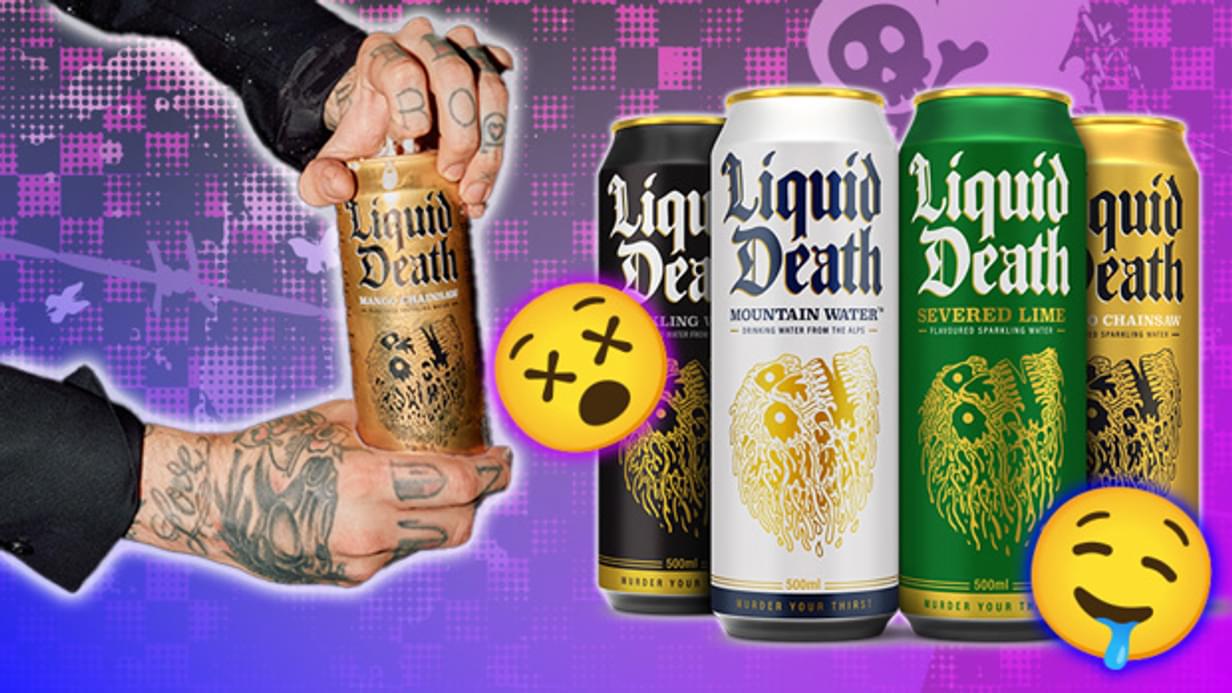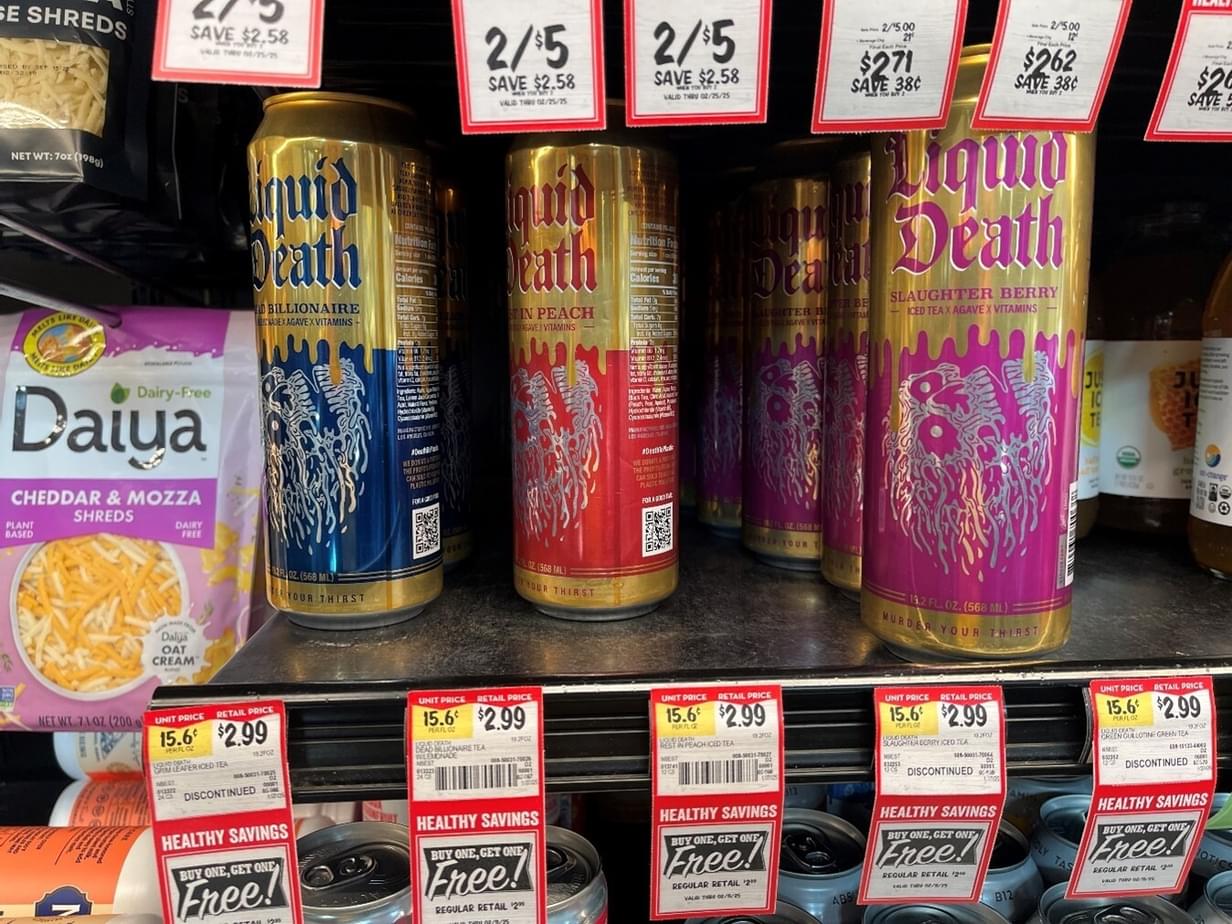Hype Kills: What Liquid Death Teaches Us About Marketing Failures
Liquid Death invited Brits to "Murder Your Thirst," but poor sales have killed off any chance of Mike Cessario’s quest for global dominance. As the marketing community conducts its postmortem, Andrew Wardlaw casts a range of factors that must take their fair share of responsibility.

Andrew Wardlaw, Chief Ideas Officer, MMR Research
10 Feb, 2025 | 6 minutes
The Buzz vs. Reality Gap
“It’s happening all over again!” That’s how commentator Mark Ritson described the vast gulf between marketing hype and actual sales of Liquid Death in July 2024. Perhaps Ritson had PRIME in his sights – another social fly-by-night beverage brand that found itself in the bargain bin. Nonetheless, Liquid Death is still considered a marketing triumph by many – a boundary breaking brand that banks on badge value to embed itself with the cool kids. But this has – so far - proved insufficient to underpin international expansion.

As someone who writes a lot about the perils of the low attention economy, it is important that we praise the brand’s creators, including its founder Mike Cessario, for their out-of-the-box thinking. The brand’s creative director, Andy Pearson has been fearless in his attempts to pierce public consciousness: “Our competition is not other brands in the category. It’s other things that you see in your social feed. That’s our competition!” It’s an approach that has seen copycat tactics being adopted by much larger brands as they also attempt to offset media fragmentation. Megan Bourner-Powell at Huxly Global says that ‘brands should not be discouraged by this news and remain fearless – ensuring room for creativity that bypasses hierarchical chains of command, empowering everyone to generate ideas.’ Well said, but the fact remains: great marketing and viral creativity amount to nothing if the product experience is unremarkable.
Hyped products should go beyond ‘fit the concept’ and dramatize every sensory interaction on the same trajectory.
The problem with buzz brands like Liquid Death is that they inevitably raise people’s expectations, so much so that the potential gap between the rhetoric and the reality is seismic. This is a cautionary tale for all manufacturers: hyped products should aim beyond ‘fit the concept’ and dramatize every sensory interaction on the same trajectory.
To be fair, matching or exceeding expectations is a tall order when the core range is still water. However, Liquid Death’s foray into iced tea has also fallen short in terms of the actual liquid experience. One colleague described the experience of Liquid Death Mango Chainsaw as ‘lightly flavoured soda water.’ This is completely detached from its promise. There are no flavor ‘spikes’ or aromatic ‘peaks’. Liquid Death’s failure was in believing that bold branding could compensate for an average product, but this is simply not enough when the competition is pretty damn good. Liquid Death can't just follow brash with bland and expect to earn a place in people’s repertoires.
Key Takeaway: Double down on product experience. Engineer unexpected or peak moments to match the hype. In blind tests, your product should blitz category norms.
The Product Always Wins
What unites the crew here at MMR is an unwavering belief that ultimately, it is the product that wins it! It’s no surprise to say that we were emboldened by Ritson’s recent musings on why the Guinness brand has endured so well. In fact, more than this, it is now enjoying record demand! In his view, it was less to do with legendary advertising, and more to do with Diageo’s ‘relentless focus’ on ensuring Guinness is consistently well-served across the globe. Could news of Liquid Death’s demise this side of the pond pile on the pressure for marketers to take on more ownership of ‘P’ for ‘Product’?
Call me old-fashioned, but there is a lot to be said for a slow, strategic distribution build.
And before we leave the whole question about hype, here’s one more thing to consider. Rapid, explosive growth may seem like a dream scenario - but it’s risky. We are all witnesses to the incredible speed at which trends now come and go. Liquid creator Durran Eden pointed out to me on LinkedIn, that ‘brands that build their momentum through TikTok are often just as quickly abandoned.’ And he’s right! Hype can kill because modern consumers can decode overnight success to mean fleeting fad, and not worth their loyalty. Call me old-fashioned, but there is a lot to be said for a slow, strategic distribution build. Take Haagen-Dazs and Peroni as great case studies here. Peroni entered the U.K. through premium dining establishments, allowing it to establish credibility and desirability before scaling up.
Key Takeaway: Don’t scale too quickly. Fast hype can lead to fast irrelevance.
Flawed Foundational Insight?
Cessario’s original insight was compelling: pesky kids and sweaty musicians were refilling Monster Energy cans with tap water to stay hydrated while projecting a ‘cool’ image. Liquid Death was born from that observation - positioning itself as an entertainment company that just happened to sell water. The eco-friendly angle (cans instead of plastic bottles) added another layer of differentiation.
However, as Thomas Grimer of Sketch Insight and Innovation noted, large cans of water are ‘simply impractical for everyday use.’ In the U.K., where hydration habits differ from hotter climates, people prefer bottles that they can reseal and carry around. A seemingly small detail - yet likely a critical factor in Liquid Death’s struggles at the shelf. I would recommend adoption of resealable cans as a priority!
Another issue was the price. While kids could refill their Monster can with water for free, Liquid Death was charging a hefty category premium. Aspirational badge-value brands rarely come cheap, but paying a premium for water was always going to be a hard sell.
Key Takeaway: Interrogate insights relentlessly with well-designed market research. Are they truly watertight? (Pardon the pun.)
What next?

As this story broke, and LinkedIn sprang into action, one follower asked me: if all this is true, why is Liquid Death still surviving in the U.S.?
It’s a fair question. But based on what I hear from U.S. colleagues, the brand’s European struggles could foreshadow future troubles the other side of the pond. Liquid Death is frequently seen on deal (see the picture above for a current BOGOF promotion).
When your core product is water, delivering an exceptional experience is tough! But what happens next, especially for the brand’s other ventures such as iced tea, is going to be critical to its long-term survival. Hype is great, but robust insight, elevated product experience and simple practicalities like the need to reseal determine success.